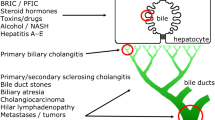Abstract
Background
2,4,6-Trinitrobenzenesulfonic acid (TNBS)-induced colitis has been used as an inflammatory bowel disease (IBD), Crohn’s disease (CD), preclinical model. However, published data on pharmacologic and therapeutic efficacy testing of this model are limited. FTY720 inhibits lymphoid cell trafficking in inflammatory conditions and is of interest to treat IBD.
Aim
We investigated the pharmacologic therapeutic efficacy of sulfasalazine, FTY720, and anti-IL-12/23p40, in a TNBS CD model.
Methods
Female, 7-week-old, BALB/c mice were given sulfasalazine orally (PO) and intraperitoneally (IP) at 10 mg/kg, FTY720 at 3 mg/kg PO, and mouse anti-IL-12/23p40 at 25 mg/kg IP. Vehicle groups given PO either phosphate-buffered saline/water or 40% ethanol served as controls. Pharmacologic efficacy was assessed using body weight loss, clinical scores of diarrhea and intestinal gross pathology, and colon weight parameters.
Results
Sulfasalazine and FTY720 treatment did not prevent body weight loss or reduce clinical scores of diarrhea or intestinal gross pathology, when compared with vehicle treatment. However, anti-IL-12/23p40 treatment showed significant efficacy by preventing body weight loss, reducing clinical scores of diarrhea, and reducing intestinal gross pathologic lesions, when compared with vehicle-treated animals. Sulfasalazine, anti-IL-12/23p40, and FTY720 were not effective in reducing colon weight.
Conclusion
With the exception of anti-IL-12/23p40, sulfasalazine, and FTY720 did not demonstrate full pharmacologic efficacy in our TNBS CD model.

Similar content being viewed by others
References
Danese S, Fiocchi C. Etiopathogenesis of inflammatory bowel diseases. World J Gastroenterol. 2006;12:4807–4812.
Bouma G, Kaushiva A, Strober W. Experimental murine colitis is regulated by two genetic loci, including one on chromosome 11 that regulates IL-12 responses. Gastroenterology. 2002;123:554–565.
Thia KT, Loftus EV Jr, Sandborn WJ, et al. An update on the epidemiology of inflammatory bowel disease in Asia. Am J Gastroenterol. 2008;103:3167–3182.
Elson CO, Beagley KW, Sharmanov AT, et al. Hapten-induced model of murine inflammatory bowel disease: Mucosa immune responses and protection by tolerance. J Immunol. 1996;157:2174–2185.
Scheiffele F, Fuss IJ. Induction of TNBS colitis in mice. Curr Protoc Immuno. 2002;Chapter 15:Unit 15.19.
Devlin SM, Panaccione R. Evolving inflammatory bowel disease treatment paradigms: Top-down versus step-up. Med Clin North Am. 2010;94:1–18 in murine TNBS-induced colitis. Inflamm Bowel Dis. 2006;12:995–999.
Takabe K, Paugh SW, Milstien S, et al. “Inside-out” signaling of sphingosine-1-phosphate: Therapeutic targets. Pharmacol Rev. 2008;60:181–195.
Halfvarson J, Bodin L, Tysk C, et al. Inflammatory bowel disease in a Swedish twin cohort: A long-term follow-up of concordance and clinical characteristics. Gastroenterology. 2003;124:1767–1773.
Vavricka SR, Rogler G. New insights into the pathogenesis of Crohn’s disease: Are they relevant for therapeutic options? Swiss Med Wkly. 2009;139:527–534.
te Velde AA, Verstege MI, Hommes DW. Critical appraisal of the current practice in murine TNBS-induced colitis. Inflamm Bowel Dis. 2006;12:995–999.
Hoult JR. Pharmacological and biochemical actions of sulphasalazine. Drugs. 1986;32:18–26.
Wahl C, Liptay S, Adler G, Schmid RM. Sulfasalazine: A potent and specific inhibitor of nuclear factor kappa B. J Clin Invest. 1998;101:1163–1174.
Daniel C, Sartory N, Zahn N, et al. FTY720 ameliorates Th1-mediated colitis in mice by directly affecting the functional activity of CD4 + CD25 + regulatory T cells. J Immunol. 2007;178:2458–2468.
Neurath MF, Fuss I, Kelsall BL, et al. Antibodies to interleukin 12 abrogate established experimental colitis in mice. J Exp Med. 1995;182:1281–1290.
Sartor RB. The influence of normal microbial flora on the development of chronic mucosal inflammation. Res Immunol. 1997;148:567–576.
Macfarlane GT, Blackett KL, Nakayama T, et al. The gut microbiota in inflammatory bowel disease. Curr Pharm Des. 2009;15:1528–1536.
Acknowledgments
This study was conducted at MD Biosciences and sponsored and supported by Pfizer Worldwide Research and Development.
Author information
Authors and Affiliations
Corresponding author
Rights and permissions
About this article
Cite this article
Radi, Z.A., Heuvelman, D.M., Masferrer, J.L. et al. Pharmacologic Evaluation of Sulfasalazine, FTY720, and Anti-IL-12/23p40 in a TNBS-Induced Crohn’s Disease Model. Dig Dis Sci 56, 2283–2291 (2011). https://doi.org/10.1007/s10620-011-1628-8
Received:
Accepted:
Published:
Issue Date:
DOI: https://doi.org/10.1007/s10620-011-1628-8




